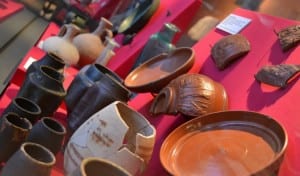Having looked around the space and had a chance to feel comfortable in both buildings, we have had some time to think of possible ideas for our performance. Interestingly, Susan Bennett’s book Theatre and Museums focuses on the link between acting and where a piece is staged, for example a museum. Being that we have a chance to perform in The Collection Museum, I found it interesting to note that ‘museums traffic mostly in material designated as representing the past, while theatrical performance takes place resolutely in the present’ (Bennett 2012, p.5). Obvious as this may be, this confronts the idea of our performance being ‘site’ specific, and whether this means we need to focus on the history of the building. Is it instead possible to make a modern element the main feature of our performance and simply touch on the history of the building? In this way, we will still have free theatrical reign and our ideas may be able to flow more freely.
Whilst considering this, we have also spent time in both buildings and so far have been more drawn to a corner of the Collection with a large window that looks out onto some modern glass offices. This may be another way of connecting historical and modern elements of Lincoln within our performance piece, as there is a large sign in that area discussing the development of Lincoln from fields to concrete. According to this sign, ‘2000 years ago it was woodland’, and ‘100 years ago there was red brick’. Therefore we must consider the changes the site has gone through to become the Usher Gallery and the Collection Museum. By connecting these elements we may be able to delve deeper in the details of the site, whilst getting our audience to consider a future building that may stand in place of the Collection, as the Collection stands where fields once were. Whilst we consider history, we must also consider the future.
Pottery in The Collection Museum
References: Bennett, Susan (2012) Theatre and Museums, London: Palgrave Macmillan.
Author: Lacey Cole.
